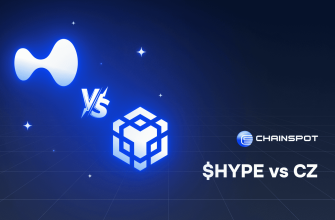- 1) What “manipulation” actually means in crypto
- 2) Who are the players?
- 2.1 Retail and pros
- 2.2 Whales
- 2.3 Market makers (MMs)
- 2.4 Exchanges and protocols
- 3) Classic tactics you’ll see (and how they show up)
- 3.1 Spoofing / layering (CEX order books)
- 3.2 Wash trading / matched orders
- 3.3 Stop hunts and “liquidation sweeps”
- 3.4 Marking the close / fixing prints
- 3.5 Quote stuffing / latency games
- 3.6 Cross-venue “optics” pushes
- 4) How liquidations actually get triggered
- 4.1 The actors: longs, shorts, and the machine
- 4.2 What starts a cascade
- 4.3 Why crypto cascades are violent
- 4.4 Defense checklist for liquidations
- 5) AMMs, MEV, and on-chain specific shenanigans
- 5.1 AMM mechanics you must internalize
- 5.2 Sandwich attacks (MEV)
- 5.3 Oracle manipulation
- 6) Market makers: the honest version and the ugly version
- 6.1 The honest version (you want them around)
- 6.2 When it gets ugly
- 7) News, indexes, and structured windows
- 8) Reading the tape like an adult
- 8.1 Order book and liquidity
- 8.2 Derivatives posture
- 8.3 Flow tells
- 9) A playbook for not getting farmed
- 9.1 Execution
- 9.2 Risk
- 9.3 Timing
- 9.4 Costs
- 9.5 On-chain hygiene
- 10) On-chain case patterns you’ll see again and again
- 11) Ethics and law (because this matters)
- 12) Tactical defenses by scenario
- 12.1 The obvious stop run
- 12.2 The liquidation cascade
- 12.3 The “everything pumps” meme hour
- 12.4 Perps detaching from spot
- 13) How market makers (proper) manage risk—and what you can copy
- 14) Tools that help you see through the noise
- 15) A short glossary (no fluff)
- 16) The “do this every week” checklist
- 17) Closing: don’t be the content—be the operator
Long read—save it. This is an honest look at how crypto markets get pushed around, where it’s fair game and where it gets dirty, and what you can do so your account doesn’t get fed into someone else’s play.
Quick housekeeping: most “defense” boils down to speed, costs, and control. When you rotate collateral across chains or top up gas on a new L2, keep basis points tiny. Chainspot bundles swap + bridge in one click, chooses the cheapest route, and gives you cashback (plus referrals). That’s real edge you keep: https://app.chainspot.io
1) What “manipulation” actually means in crypto
“Manipulation” is a loaded word. In practice there’s a spectrum:
-
Legitimate liquidity provision and price discovery.
Market makers (MMs) post tight two-sided quotes, warehouse inventory, and help you get filled. They profit from spreads/rebates, not from your misfortune. -
Aggressive but lawful trading tactics.
Running stops in an obvious level, leaning on a thin book into a news print, front-running a likely rebalance—this is gamesmanship. It’s not pretty, but it’s part of markets. -
Prohibited manipulation.
Spoofing (placing fake orders you don’t intend to execute), wash trading, matched orders, coordinated pumps/dumps with deception, oracle tampering, false statements that move price. This is where law gets involved.
Crypto has all three—amplified by 24/7 trading, global venues, and the public nature of on-chain activity. Your job as a trader is not to moralize; it’s to recognize the patterns, size correctly, and avoid being easy prey.
2) Who are the players?
2.1 Retail and pros
-
Retail click market orders, chase candles, and tend to use the same obvious stops.
-
Pros minimize taker fees, use RFQ/limits, and know when not to trade.
2.2 Whales
Wallets or firms deploying size. They can:
-
Accumulate over days using iceberg orders and RFQ.
-
Move price in illiquid hours.
-
Trigger liquidations if they know where the crowd is positioned.
2.3 Market makers (MMs)
They’re not automatically villains. Good MMs:
-
Quote two sides, rebalance inventory, and take risk you don’t want.
-
Earn from spread + rebates, sometimes incentives.
-
Keep markets orderly most of the time.
Where it gets messy is when MMs (or anyone) blur into tactics that create misleading appearance of demand/supply (spoofs, wash trades). That crosses legal lines on some venues and will always end badly long term.
2.4 Exchanges and protocols
-
CEXs run matching engines, liquidation systems, insurance funds.
-
DEXs/AMMs rely on liquidity pools, price oracles, and mempools.
-
Perp venues have mark-price formulas, funding, and ADL (auto deleverage).
Know the plumbing. A lot of “manipulation” is just someone using the rules better than you.
3) Classic tactics you’ll see (and how they show up)
Read this as defense intel. Don’t emulate illegal behavior. Most edge is in recognizing when not to play.
3.1 Spoofing / layering (CEX order books)
What you see: Large limit orders stack just above/below price, then vanish when touched. Book looks heavy/light, then it isn’t.
Tell-tales: Repeated cancel/replace in milliseconds, size clusters exactly at round numbers, no follow-through when price nears.
Defense: Don’t chase into spoof walls; wait for traded volume, not just bids/asks. Use limits or RFQ instead of slamming the book.
3.2 Wash trading / matched orders
What you see: Volume spikes with little net price progress; same clusters trade both sides.
Where: Thin tokens on small venues, some NFT collections.
Defense: Trade liquid pairs on reputable venues. Confirm liquidity across venues; do not trust “24h volume” blindly.
3.3 Stop hunts and “liquidation sweeps”
What you see: A fast wick through obvious levels (previous highs/lows), then a snap back.
Why it works: Traders put clustered stops; perps use similar liquidation thresholds (more on that later).
Defense: Avoid fixed stops at the most obvious levels; use alerts and discretionary exits; prefer reduce-only take profit brackets to prevent whipsaw.
3.4 Marking the close / fixing prints
Less common in 24/7 crypto, but windows exist (funding snapshots, index captures).
Defense: Don’t open fresh leverage into a funding window minute or just before an index snapshot.
3.5 Quote stuffing / latency games
Flooding the book with messages to slow others. Rare for retail to detect; common on some venues during chaos.
Defense: Trade calmer windows; avoid news spikes.
3.6 Cross-venue “optics” pushes
Small buys on one venue create headlines or bots that mirror across others.
Defense: Validate with consolidated volume and cross-venue spreads before chasing.
4) How liquidations actually get triggered
You will hear “whales caused the cascade.” Usually they just pulled the first brick; the rest was math.
4.1 The actors: longs, shorts, and the machine
-
Perp positions have margin and maintenance requirements.
-
Venues compute a mark price (index + safeguards) to avoid easy manipulation on the last trade.
-
If your margin ratio crosses a threshold, the venue will liquidate your position at market or via auction.
4.2 What starts a cascade
-
A push through a liquidity pocket (thin order book or AMM depth).
-
Mark price ticks into your maintenance zone.
-
Liquidator bots take over, selling into the next pocket.
-
That pushes mark lower, hitting more stops.
-
If the insurance fund is strained, ADL (auto-deleverage) can close opposing positions.
4.3 Why crypto cascades are violent
-
24/7 market, weekends included.
-
Cross-venue leverage (multiple perps venues; some with loose risk).
-
AMM slippage: on-chain legs have depth cliffs.
-
Oracles can lag or overreact if not designed well.
4.4 Defense checklist for liquidations
-
Keep low leverage.
-
Respect funding windows and avoid opening new positions minutes before.
-
Use reduce-only exits and profit brackets.
-
Know the venue’s mark price formula and ADL tiers.
-
If you need to top up margin across chains, do it cheaply and fast so you aren’t late: https://app.chainspot.io (swap + bridge in one click, cashback).
5) AMMs, MEV, and on-chain specific shenanigans
5.1 AMM mechanics you must internalize
-
Price impact is mathematical: big swaps move price along the curve.
-
Liquidity is uneven; outside top ranges (in concentrated liquidity), slippage spikes.
-
If you set wide slippage tolerance, you’re a piñata.
Defense:
-
For size, use RFQ routes or split orders.
-
Keep slippage tolerance tight and MEV-protect your swaps (private relays where supported).
-
Route via a smart aggregator so you don’t pay two extra hops for nothing.
5.2 Sandwich attacks (MEV)
A bot sees your pending swap, trades in front of you, and offloads after you move price.
Defense:
-
Use private orderflow / MEV-protected routing.
-
Don’t set absurd slippage.
-
Avoid broadcasting huge swaps into public mempools; break them up or RFQ.
5.3 Oracle manipulation
If a protocol prices assets from an oracle you can nudge (thin TWAP, low-liquidity pair), attackers can “print” a fake price to borrow against.
Defense (as a user):
-
Prefer protocols with multi-source oracles, TWAP clamps, caps, and audits.
-
If you run a protocol, assume attackers will time low liquidity + fast blocks.
6) Market makers: the honest version and the ugly version
6.1 The honest version (you want them around)
-
Tight spreads: lower cost for everyone.
-
Inventory risk: they buy when you panic-sell; sell when you FOMO buy.
-
Stability: they show up in chop and provide continuity.
6.2 When it gets ugly
-
Some firms turn to behavioral targeting: they study where retail places stops and nudge price into those pockets during low liquidity.
-
Spoof-like patterns and washy volume appear on smaller venues.
-
Cross-venue games can disguise true interest.
Your edge: you don’t have to fight them. Trade during good depth, avoid obvious levels for stops, and let them do their job while you wait for clean setups.
7) News, indexes, and structured windows
-
Macro prints (CPI, FOMC) and listing/ETF headlines cause “headline minutes.”
-
Funding snapshots (every 8 hours on many perps) create marking windows.
-
Index captures for certain structured products can pull flow.
Defense:
-
Do not open fresh leverage into the minute of a major event.
-
If you’re already in, either hedge earlier or plan to sit through noise.
-
Remember: the first move on a headline is often wrong.
8) Reading the tape like an adult
8.1 Order book and liquidity
-
Look for depth nodes (where size consistently rests) and gaps.
-
Monitor spread and volatility together—widening spreads into rising vol means you’re paying more to be wrong.
8.2 Derivatives posture
-
Funding (who pays whom): extreme negative can squeeze up; extreme positive can wash out longs.
-
Open interest (OI): rising OI into a tight range = coiled spring.
-
Basis (perp vs spot): watch for dislocations.
8.3 Flow tells
-
CVD (cumulative volume delta) diverging from price can hint absorption.
-
Large prints at a level with no follow-through suggests an iceberg or reversion.
None of this is magic. It’s context so you don’t YOLO into the worst minute of the day.
9) A playbook for not getting farmed
9.1 Execution
-
Prefer limit or RFQ over blind market orders.
-
Use reduce-only TPs.
-
Split orders; don’t be the candle.
9.2 Risk
-
Hard caps per trade and per day.
-
Leverage small enough that you can think.
-
Avoid “double-or-nothing” martingale. That’s not edge; that’s a ladder to liquidation.
9.3 Timing
-
Avoid the first minute after big headlines.
-
Don’t engage in illiquid hours unless you’re deliberately playing that game.
9.4 Costs
-
Route cross-chain with one step and cashback so you don’t bleed to fees. If you must top up margin on another chain, do it efficiently: https://app.chainspot.io.
9.5 On-chain hygiene
-
Tight slippage tolerance.
-
MEV-protected routes for size.
-
Review approvals and use spend limits; revoke monthly.
10) On-chain case patterns you’ll see again and again
-
Pre-pump gas sprinkles: dozens of fresh wallets receive small gas amounts before a move—often a farming campaign or orchestrated rotation.
-
Bridge surges: spikes on a particular bridge before narrative headlines hit.
-
Router games: thin tokens re-routed through multiple pools to simulate volume, then slammed back.
What you do: wait for real depth and sustained volume across multiple venues; don’t let one chain’s pool trick you into chasing.
11) Ethics and law (because this matters)
Illegal: spoofing, wash trades, matched orders, disseminating false info to move price, oracle tampering, theft.
Gray but common: stop runs, exploiting predictable rebalances, leaning on thin books.
Clean and rewarded: providing liquidity, quoting tight, arbitrage that closes spreads, building tools and analytics.
If you want to last, stick to the last category. The “fast money” stuff ends with frozen accounts or worse.
12) Tactical defenses by scenario
12.1 The obvious stop run
-
Don’t place your stop at the exact prior swing. Add buffer or use alerts and manual action.
-
If you miss, let it go. Revenge trades fund the other side.
12.2 The liquidation cascade
-
Switch to limits away from the blast zone; catching falling knives with market orders is a donation.
-
If you’re long and near margin call, either de-risk early or top up in time. If topping up requires cross-chain funds, take the cheapest swap + bridge path (yes: Chainspot).
12.3 The “everything pumps” meme hour
-
Don’t chase the 6th green candle. Identify leader vs followers; trade the leader or stand down.
-
Use smaller size with wider stops if you must participate.
12.4 Perps detaching from spot
-
If perp premium goes wild, consider spot-perp hedges if you understand funding/basis risk.
-
Otherwise, avoid becoming the exit liquidity for funding-driven squeezes.
13) How market makers (proper) manage risk—and what you can copy
-
Inventory limits per asset and per side.
-
Kill switches on performance drawdown.
-
Venue diversification and collateral buffers.
-
Maker first, taker only by exception.
-
Logs that explain loser trades.
You can do a retail version: daily loss stop, per-trade size, two venues, journal everything.
14) Tools that help you see through the noise
-
Order book heatmaps & footprint charts (for CEX depth).
-
Funding/OI dashboards (perps posture).
-
On-chain explorers to check real liquidity and approvals.
-
Aggregators for best execution (especially cross-chain).
-
Private orderflow / MEV-protected relays for large swaps.
Again: execution is half the game. Pay less to be wrong and you’ll survive long enough to be right.
15) A short glossary (no fluff)
-
ADL: Auto-deleverage—venue closes profitable opposing positions when insurance is inadequate.
-
Basis: Difference between perp/futures and spot.
-
CVD: Cumulative Volume Delta, buy vs sell market volume.
-
Funding: Periodic payment between perp longs and shorts to anchor price to spot.
-
Iceberg: Large order shown as small, refreshing as fills happen.
-
Mark price: Fair-value estimate used to trigger liquidations.
-
RFQ: Request-for-quote—off-book quote for size.
-
TWAP/VWAP: Time/volume-weighted average price strategies.
16) The “do this every week” checklist
-
Set position limits and a daily loss stop.
-
Avoid event minutes; trade calm windows.
-
Use limits/RFQ; reduce-only TPs.
-
Keep gas + stables on two chains; rebalance with Chainspot (swap+bridge, cashback).
-
MEV-protect large swaps; tight slippage.
-
Revoke stale approvals; use spend limits.
-
Log trades: time, size, venue, why, outcome.
17) Closing: don’t be the content—be the operator
Manipulation headlines will keep coming. Whales will always push when they smell weakness. None of that decides your PnL. What decides it is how you enter, size, exit, and pay for all three.
-
Trade when depth is decent and spreads are honest.
-
Fight fewer battles; make better entries.
-
Stop handing out basis points for free.
And every time you need to move assets to the right chain at the right time—compress the steps:
Swap + bridge in one click, keep fees tiny, and earn loyalty cashback (with referrals too): https://app.chainspot.io
Stay sharp. Trade clean. Live to trade the next setup.












